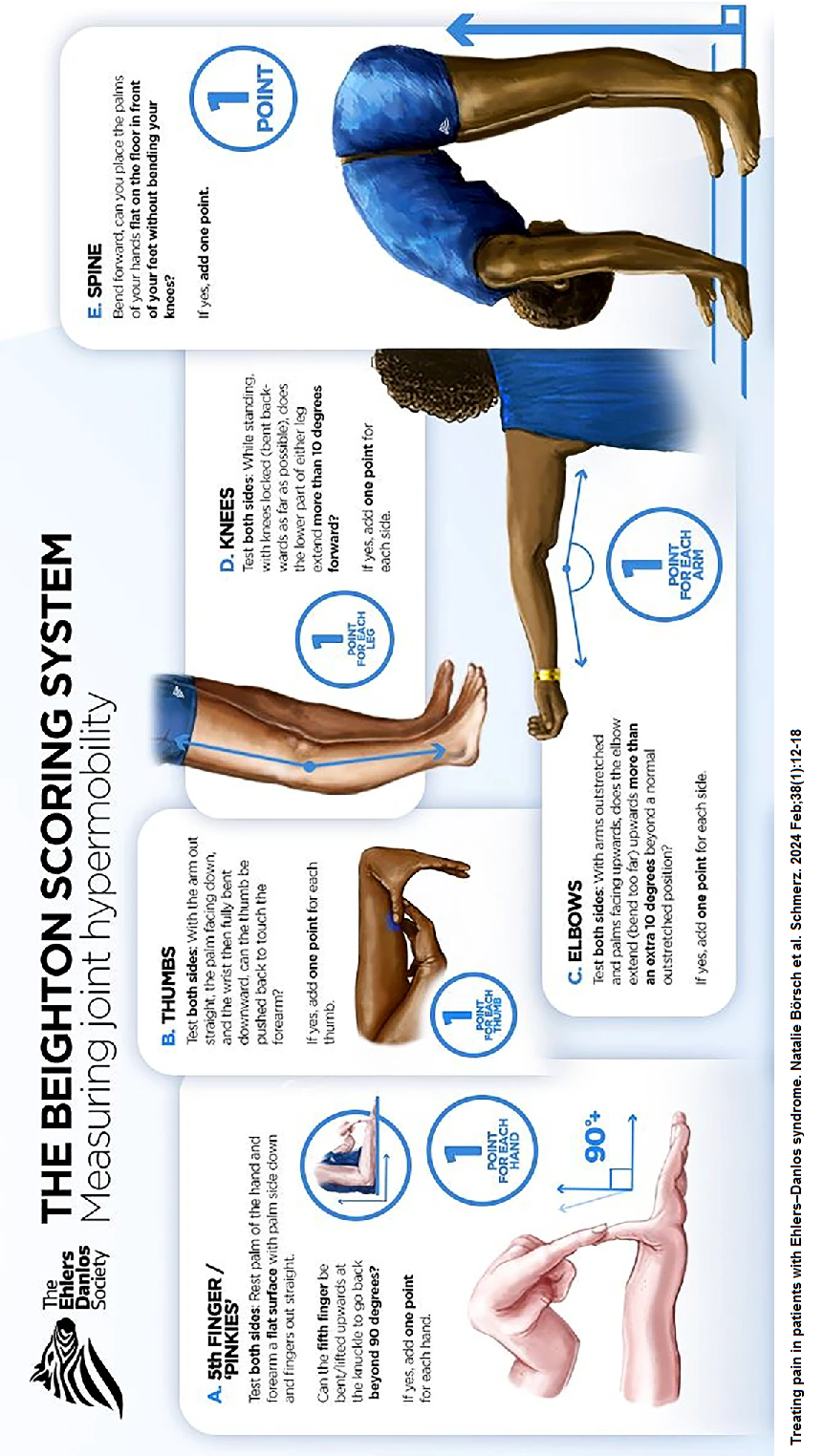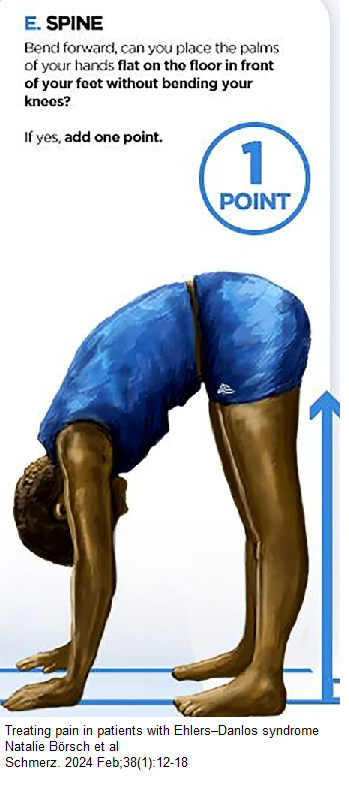German journal article has good templates for diagnosing Ehlers–Danlos syndrome and I thought the world should share this…
Treating pain in patients with Ehlers–Danlos syndrome
Natalie Börsch et al
Schmerz. 2024 Feb;38(1):12-18
https://pubmed.ncbi.nlm.nih.gov/38189943/
Questions: ( One point may be added to the Beighton score if two or more of the following apply:)
Can you now (or could you ever) place the hands flat on the floor without bending the knees?
Can you now (or could you ever) bend the thumb to touch the forearm?
As a child did you amuse your friends by contorting your body into strange shapes OR could you do the splits?
As a child or teenager did your shoulder or kneecap dislocate on more than one occasion?
Do you consider yourself double-jointed?
—————
Hypermobility testing:
Although above printable, this is more easily visible:
Prepubertal children and adolescents – 6 or higher
Pubertal men and women to age 50 – 5 or higher
Men and women over the age of 50 – 4 or higher
Comment – excellent aid to diagnosis which usually takes 10 years… this disease is robustly associated with headaches, TMJ, neck pain, abdominal pain, pelvic pains, and generalized pains. I will try to report on that later.




